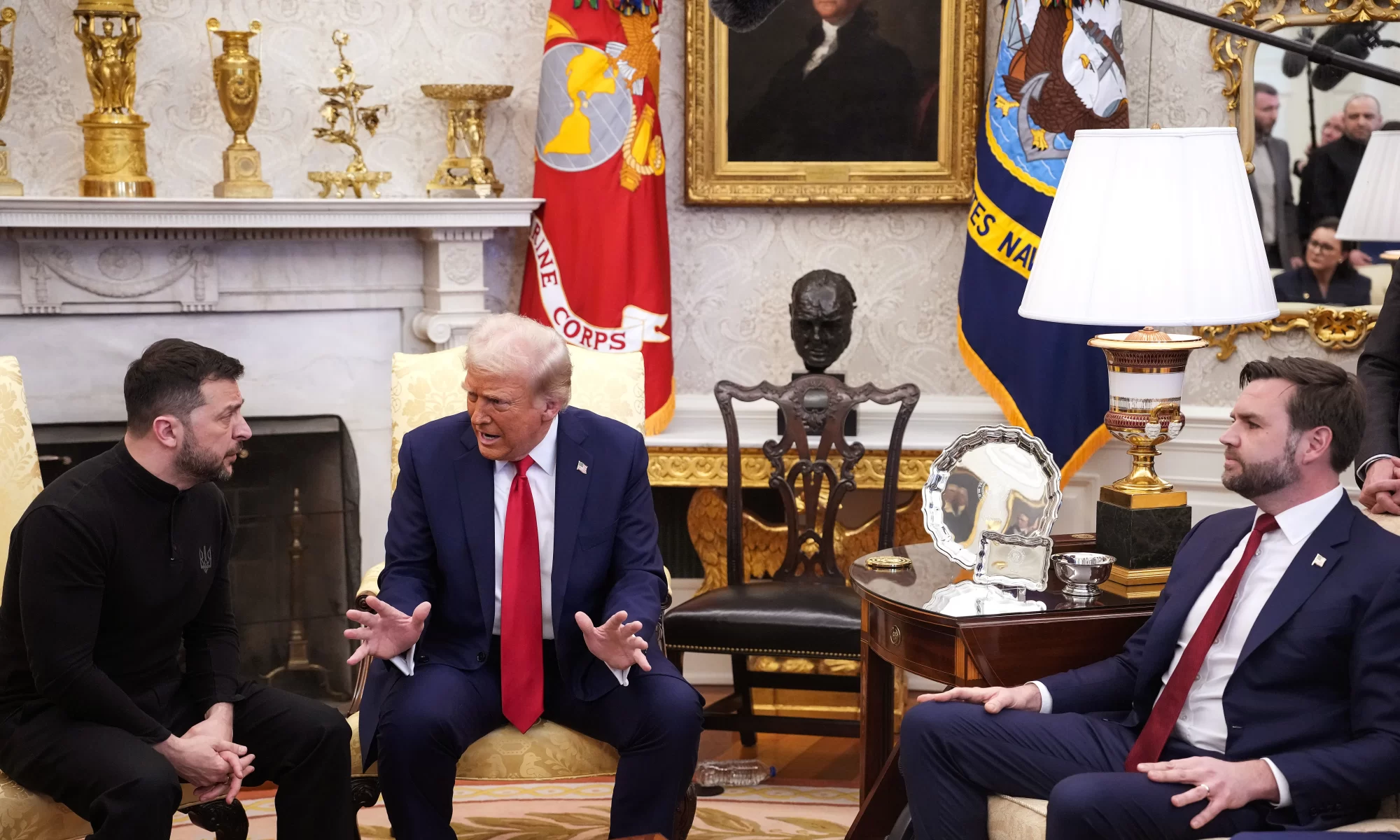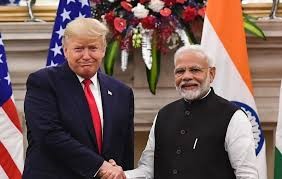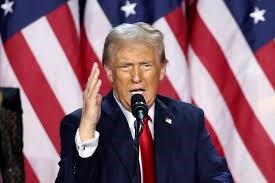My article published on the EurasianTimes Website on 08 Mar 25.
Diplomatic meetings between world leaders are often carefully choreographed to project unity, resolve, and a sense of shared purpose. However, the recent press meeting between U.S. President Donald Trump and Ukrainian President Volodymyr Zelensky defied all such expectations, quickly descending into a diplomatic debacle. Marked by confusion, contradictions, and apparent miscommunication, the event highlighted broader concerns about U.S. foreign policy, Ukraine’s ongoing struggle for support, and the personal dynamics of both leaders.
Background: A History of Tense Relations
The Trump-Zelensky relationship has never been straightforward. From the infamous 2019 impeachment inquiry that stemmed from a call between the two leaders to ongoing questions about U.S. military aid to Ukraine, the relationship has been defined by political manoeuvring and controversy. Trump’s scepticism regarding continued assistance to Ukraine and his past praise for Russian President Vladimir Putin further complicated the dynamic, making any public engagement between him and Zelensky a high-stakes affair. Zelensky, who has tirelessly lobbied for international support, entered the meeting seeking reassurances of continued U.S. backing. Conversely, Trump appeared less committed to a strong pro-Ukraine stance, leading to inevitable friction.
The Press Meeting: Breakdown of the Fiasco
Opening Remarks and Immediate Tensions. The meeting began with a sense of unease. Zelensky, clearly aware of the political delicacy of the moment, attempted to emphasise the need for U.S. solidarity with Ukraine. He spoke about Ukraine’s resilience, the necessity of sustained military aid, and the importance of a united front against Russian aggression. Trump, however, struck a different tone. Instead of affirming U.S. support unequivocally, he pivoted to grievances about past U.S. financial commitments, echoing his longstanding argument that European nations should bear more burden for Ukraine’s defence. He also made cryptic remarks about Ukraine’s leadership and the need for a negotiated settlement with Russia, which many interpreted as a sign of wavering commitment.
Contradictory Statements and Public Disagreements. As the meeting progressed, the contradictions between the two leaders became more evident. In response to a journalist’s question about military aid, Zelensky reaffirmed Ukraine’s urgent need for continued weapons shipments. Trump, however, avoided direct commitments, instead suggesting that if he were in office, he would have “ended the war in 24 hours,” a vague assertion he repeated without offering concrete details. The starkest moment of discord came when a reporter pressed Trump on whether he believed Ukraine could win the war against Russia. Trump hesitated, then pivoted to criticising NATO and questioning whether Europe was doing enough. Zelensky, visibly frustrated, countered by stressing that Ukraine’s ability to win depended on consistent U.S. and allied support. The exchange underscored the growing gap between the two leaders’ worldviews.
Mixed Signals. Observers were quick to highlight the numerous diplomatic missteps throughout the meeting. Trump’s non-committal language and refusal to explicitly endorse continued U.S. military support for Ukraine was seen as a signal of uncertainty, leaving allies and adversaries speculating about future policy shifts. While maintaining his composure, Zelensky’s increasingly direct responses indicated his dissatisfaction and frustration with Trump’s reluctance to take a firm stance. Trump’s critique of NATO contributions muddled the broader message further about Western unity, raising concerns among European allies.
Diplomacy at its Worse.
The Fragility of Diplomatic Engagements. The meeting’s abrupt shift from a planned minerals agreement to a contentious exchange underscores the delicate nature of diplomatic interactions. Despite prior negotiations, the inability to finalise the deal highlights how quickly diplomatic efforts can unravel when foundational trust and mutual respect are compromised. The casual and often adversarial tone of Trump’s remarks toward Zelensky further exemplified a shift in diplomatic norms. Rather than projecting a united front, Trump’s statements highlighted internal divisions and personal grievances.
The Importance of Diplomatic Protocol and Respect. The public nature of the dispute, with President Trump accusing President Zelenskyy of ingratitude, deviated from traditional diplomatic decorum. Such breaches can strain bilateral relations and diminish the effectiveness of future diplomatic engagements, emphasising the need for maintaining professionalism and mutual respect in international affairs. Despite attempts to project unity, Zelensky’s visible discomfort and Trump’s dismissive attitude toward concerns about quid pro quo revealed the limitations of public diplomacy when deeper tensions exist behind the scenes. The meeting failed to resolve underlying doubts about U.S.-Ukraine relations and instead amplified media scrutiny.
Mixing Domestic Politics with Foreign Relationships
The Influence of U.S. Domestic Politics on Foreign Relations. The press conference underscored how U.S. foreign policy, especially toward allies, is deeply entangled with internal political battles. President Trump’s confrontational stance, influenced by internal political dynamics, exemplifies how domestic agendas can shape foreign policy decisions. Trump’s remarks about Ukraine and its supposed history of corruption tied directly into his impeachment inquiry, showing how personal political interests can shape international dealings. This incident illustrates foreign leaders’ challenges when navigating the complex landscape of U.S. internal politics, especially when partisan considerations overshadow international commitments.
The Influence of Personal Diplomacy on International Relations. The incident highlights how personal dynamics between leaders can profoundly impact bilateral relations. The personal grievances aired during the meeting suggest that individual personalities and interpersonal interactions play a critical role in shaping the course of international diplomacy.
The Precarious Position of U.S. Allies in a “Transactional” Foreign Policy. Trump’s “America First” approach was evident in his insistence that European nations should contribute more to Ukraine’s defence. This transactional nature of U.S. support made it clear that Ukraine (and similar allies) could not assume unconditional backing but had to navigate shifting expectations and potential political costs.
Domestic and International Reactions
U.S. Political Response. Reactions to the meeting in Washington were polarised. Trump’s Republican allies attempted to downplay the discord, with some arguing that Trump’s tough talk was aimed at pushing European nations to contribute more. However, critics, especially from the Democratic Party and foreign policy experts, warned that Trump’s ambiguity could embolden Russia and undermine Ukraine’s war effort. Some within the party, particularly those who support continued aid to Ukraine, expressed concerns about how Trump’s remarks might be interpreted in Kyiv and Moscow. Some in Congress argue that Trump’s stance weakens America’s leadership role, while his base largely supports a reduced involvement in Ukraine.
Ukrainian Stance. Reactions in Ukraine were mixed but largely apprehensive. Ukrainian officials emphasised their appreciation for past U.S. support but privately expressed concerns about Trump’s unpredictable stance. Some Ukrainian commentators viewed the meeting as a missed opportunity to secure more substantial commitments from a key U.S. leader with potential future influence.
European Reactions. European leaders, meanwhile, were alarmed by Trump’s comments on NATO burden-sharing. French and German officials reiterated their commitment to Ukraine but privately worried that Trump’s rhetoric could further strain transatlantic relations. Moscow, predictably, seized on Trump’s remarks as evidence of weakening Western resolve, with Russian state media amplifying his criticisms of NATO and U.S. financial commitments to Ukraine.
Russian Reaction. Moscow obviously approved of the discord between the U.S. and Ukraine. Russian officials have openly expressed satisfaction over the fallout, viewing it as a potential weakening of NATO unity and a strategic advantage for Russia. Russia may see this as an opportunity to prolong the war and test NATO’s resolve.
Post-Meeting US Follow-up Actions
Following the contentious Oval Office meeting with Ukrainian President Volodymyr Zelensky on February 28, 2025, President Donald Trump has reportedly undertaken several actions.
Public Criticism of President Zelensky. In the aftermath of the meeting, President Trump publicly criticised President Zelensky, accusing him of disrespecting the United States during his visit to the Oval Office. Trump expressed that Zelensky’s attitude was not conducive to peace negotiations and suggested that U.S. support could be reconsidered if Ukraine is not committed to resolving the conflict.
Suspension of Military Aid. President Trump ordered a “pause” on U.S. military aid to Ukraine, aiming to pressure President Zelensky into engaging in peace talks with Russia. This suspension affects all military equipment not yet in Ukraine, including weapons en route by air or sea and those held in transit areas in Poland.
Suspension of Intelligence Sharing. President Donald Trump has suspended intelligence sharing with Ukraine. The suspension encompasses critical data on Russian military movements and intentions. The Trump administration has indicated that this suspension is a temporary measure contingent upon Ukraine’s engagement in peace negotiations with Russia.
Re-evaluation of U.S. Support for Ukraine. The administration is reassessing its stance on unconditional support for Ukraine. White House Press Secretary Karoline Leavitt indicated that the U.S. is no longer willing to provide unchecked aid without a clear path to peace, reflecting a shift in policy towards a more conditional approach based on Ukraine’s cooperation in peace efforts. National Security Adviser Mike Waltz mentioned that the U.S. is pausing and reviewing all aspects of its relationship with Ukraine.
Russian Recent Kursk Operations
In recent developments, Russian forces have launched a significant offensive in the Kursk region, aiming to encircle Ukrainian troops. On March 5, 2025, taking advantage of the cessation of U.S. intelligence support to Ukraine, Russian units advanced rapidly southward, threatening the main Ukrainian stronghold at Sudzha. This manoeuvre risks encircling approximately 10,000 Ukrainian soldiers, prompting the Ukrainian command to consider a strategic withdrawal to avoid substantial losses. The suspension of U.S. military aid and intelligence sharing has critically weakened Ukraine’s defensive capabilities in the area. These developments underscore a rapidly evolving and precarious situation in the Kursk region, with potential implications for the broader conflict dynamics.
Implications
Uncertainty over Future U.S. Policy. The meeting reinforced growing uncertainty over the future of U.S. policy toward Ukraine. With Trump’s return to the White House, Ukrainian officials must prepare for a more transactional approach to diplomacy that could demand greater European involvement and a shift in U.S. support priorities.
Impact on Ukraine’s War Effort. For Ukraine, clarity on long-term U.S. support remains critical. Trump’s lack of firm commitments in this meeting means Kyiv will likely intensify its outreach to Congress and other Western leaders to secure ongoing aid. If Trump or his allies push for a reduction in assistance, Ukraine may face more significant challenges in sustaining its military operations against Russia.
Zelensky’s Political Future. Domestically, Zelensky faces mounting pressure. Critics argue that his confrontational approach with Trump may jeopardise Ukraine’s international support, leading some U.S. lawmakers to question continued assistance. Senator Lindsey Graham suggested that Zelensky consider resigning or altering his stance to maintain U.S. support.
Geopolitical Ramifications. Beyond the U.S.-Ukraine dynamic, the meeting had broader implications for global diplomacy. It highlighted deepening divisions within the West over approaching the Ukraine conflict and signalled to adversaries that American foreign policy may remain unpredictable. This uncertainty could embolden Russia while complicating efforts to maintain a strong and united Western response.
Knock-on Effects
Impact on NATO and Global Diplomacy. The incident has exposed rifts within NATO and raised questions about the alliance’s cohesion. European nations would now contemplate increased defence budgets and a more autonomous security strategy independent of U.S. leadership.
Power Dynamics in Asymmetrical Alliances. Zelensky’s cautious and deferential tone initially highlighted the challenges faced by smaller nations dependent on U.S. military and financial support. His attempt to downplay the controversy around Trump’s alleged pressure suggested an effort to maintain favour with Washington while avoiding deeper entanglement in U.S. domestic politics.
The Strategic Calculations of Smaller Nations. Ukraine’s predicament reflects the complex calculus smaller nations must perform when aligning with major powers. Balancing national interests against the expectations of powerful allies requires astute diplomacy, especially when those allies’ internal politics are in flux. Countries reliant on U.S. security guarantees may reconsider their alliances, fearing instability in American foreign policy.
The Necessity for Allies to Diversify Support. Given the U.S. administration’s unpredictable stance, Ukraine’s subsequent outreach to European leaders signifies the importance of nations diversifying their alliances. Relying on a single ally, especially one with shifting foreign policy positions, can leave countries vulnerable, underscoring the need for a broad base of international support.
Conclusion
The Trump-Zelensky press meeting was a textbook example of how diplomatic engagements can go awry. The event showcased the growing uncertainty surrounding U.S.-Ukraine relations, from mixed messaging to visible tensions. For Ukraine, securing unwavering support remains a top priority, while for Trump, the meeting underscored his evolving and often ambiguous stance on foreign policy. As the war in Ukraine continues, the need for clear, consistent, and unified diplomatic messaging has never been greater. Whether future engagements between the U.S. and Ukraine can avoid similar pitfalls remains an open question with high stakes for both nations and the wider international community.
Please Do Comment.
For regular updates, please register your email here:-
References and credits
To all the online sites and channels.
Pics Courtesy: Internet
Disclaimer:
Information and data included in the blog are for educational & non-commercial purposes only and have been carefully adapted, excerpted, or edited from reliable and accurate sources. All copyrighted material belongs to respective owners and is provided only for wider dissemination.
References:-
- The Guardian. “Trump criticises European leaders at Starmer’s Ukraine summit for saying they need US support – as it happened.” The Guardian, March 3, 2025.
- New York Post. “Trump pauses all US military aid to Ukraine after heated Oval Office meeting with Zelensky.” New York Post, March 3, 2025.
- The Times. “Zelensky ‘won’t be around very long’, says Trump – as it happened.” The Times, March 3, 2025.
- Vanity Fair. “Kremlin Hails Trump’s Zelensky Blow-Up: Washington Now ‘Aligns With Our Vision’.” Vanity Fair, March 3, 2025.
- India Today. “Zelenskyy breaks silence on Trump’s public dressing-down: Don’t think it’s right.” India Today, March 3, 2025.
- Hindustan Times. “US News Live Today March 1, 2025: Donald Trump says Zelenskyy can return for talks when ‘ready for peace’.” Hindustan Times, March 1, 2025.
- The Indian Express. “Zelenskyy wants to work ‘directly’ with Trump, suggests measures to end Russia-Ukraine war.” The Indian Express, December 1, 2024.
- The Times. “Trump and Zelensky clash at the White House – as it happened.” The Times, March 1, 2025.
- TFI Global News. “Trump Zelensky White House clash: A Diplomatic Disaster with far-reaching consequences.” TFI Global News, March 1, 2025.




